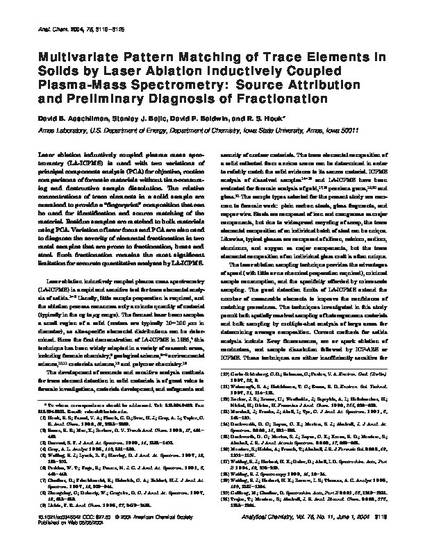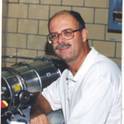
Laser ablation inductively coupled plasma mass spectrometry (LA-ICPMS) is used with two variations of principal components analysis (PCA) for objective, routine comparisons of forensic materials without time-consuming and destructive sample dissolution. The relative concentrations of trace elements in a solid sample are examined to provide a “fingerprint” composition that can be used for identification and source matching of the material. Residue samples are matched to bulk materials using PCA. Variation of laser focus and PCA are also used to diagnose the severity of elemental fractionation in two metal samples that are prone to fractionation, brass and steel. Such fractionation remains the most significant limitation for accurate quantitative analyses by LA-ICPMS.
Available at: http://works.bepress.com/robert_houk/7/

Reprinted (adapted) with permission from Analytical Chemistry 76 (2004): 3119, doi: 10.1021/ac0345042. Copyright 2004 American Chemical Society.